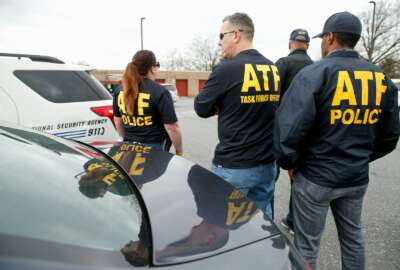
FBI spotlights innovation after new investigative technique closes cold case
Following some highly-publicized successes in resolving a few notorious cold cases based on a new investigative technique, the FBI wants to put a renewed focus ...
Following some highly-publicized successes in resolving a few notorious cold cases based on a new investigative technique, the FBI wants to put a renewed focus on innovation. Paul Abate, associate deputy FBI director, said the law enforcement agency has a history of pioneering in its field, though many of those early innovations are now taken for granted, like the FBI laboratory.
“We all need to encourage each other to think more creatively and innovatively every day in the work that we do to protect our citizens, each other, our families, loved ones and this country. And we need to make sure those ideas keep coming fast and furious.”
More recently, the FBI closed a cold case that was more than 30 years old. The Golden State Killer murdered, raped and burglarized throughout California in the 1970s and ‘80s. Though DNA was collected at the time, forensic genetics was a brand new field, and the killer remained unidentified.
“As the years passed, technology evolved, and the killer’s DNA was entered into law enforcement, forensic databases, but there was never a match during that period of time. One of our attorneys in the FBI who serves in our Los Angeles field office, together with a longtime investigator from the Contra Costa District Attorney’s Office in California, thoughtfully came up with another approach on a way that we might solve this case and identify and locate the Golden State killer,” Abate said. “We know for years that people have been uploading their DNA into public genealogy, websites and databases in order to trace their heritage and track down long lost relatives. But these individuals thought that maybe it could be a way to solve crime as well, in a more evolved way. So the team uploaded the DNA from the Golden State killer, previously unidentified, into the genealogy website. And after analyzing what they knew about the Golden State killer, his race, his age range, the timeline of the of the attacks, the locations where the crime occurred against the site’s records, they were able to narrow down that search to literally one person.”
After identifying that person and conducting surveillance, investigators obtained new DNA samples and ran them through CODIS, the FBI genetic database. It came back a match.
Now that suspect is behind bars, awaiting trial. And Abate said investigative genealogy has since helped to close more than a dozen other cold cases, including the NorCal rapist.
“Working with partners, the team was able to solve a very old series of crimes using new innovative thinking and new techniques. And it’s a great example of why we should constantly be asking ourselves, is there a better way to do things, to approach things, to solve cases, to root out terrorists, to track down cyber hackers, and to stop insider and other threats coming at us each and every day?” Abate said. “We know this because if we’re going to if we’re going to stay ahead of the threat, whether it’s criminal terrorism, counterintelligence, cyber, we need to evolve constantly and work and strive to get better each and every day. And we do this within the FBI by encouraging innovation, by working together, by working externally with partners like you, and working hard to recruit the best and the brightest for the FBI, for our partners so that we can keep the ideas coming, and keep best leveraging technology to have successful accomplishments like this that bring justice to victims into our country.”
But that wasn’t the only recent instance of innovation Abate spotlighted. He said recently, in Boston, a small team revolutionized the way the FBI handles data. The team had to process and analyze an impractically huge amount of data for a case, so they created a new platform that can handle in days amounts of data that used to take years. And that platform is now being used in all the FBI’s field offices.
Similarly, in Philadelphia, a field agent developed a system for agents to obtain just the relevant surveillance footage while on the scene, instead of processing it after the fact.
“They also in Philadelphia, in our office there came up with a new data mapping database, which was based on an iteration of Google maps that can pinpoint key places, key pieces of information, including outstanding warrants and the location of our partners, confidential human sources,” Abate said. “So we use this now across the FBI and with our partners so that when a crime occurs, whether it’s a murder, kidnapping, or other critical events, we can go to this system and use it to develop significant leads based on those data points that are, you know, housed within that system. Boston, in fact, used that system during the Boston Marathon bombing and investigation in the aftermath.”
Copyright © 2024 Federal News Network. All rights reserved. This website is not intended for users located within the European Economic Area.
Daisy Thornton is Federal News Network’s digital managing editor. In addition to her editing responsibilities, she covers federal management, workforce and technology issues. She is also the commentary editor; email her your letters to the editor and pitches for contributed bylines.
Follow @dthorntonWFED
Related Stories





